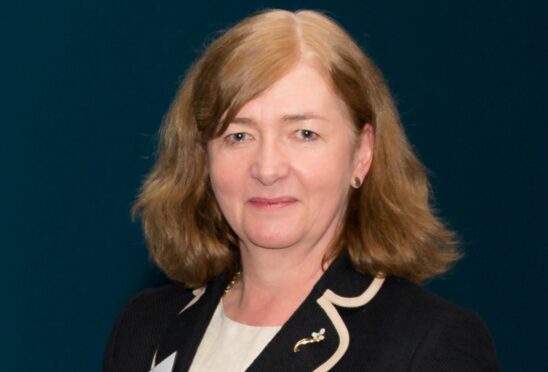
Professor Julie Fitzpatrick is the chief scientific adviser for Scotland
The last 16 months have presented us with huge challenges, both individually and collectively as a country.
Our lives have been disrupted in a way that would have been unthinkable just two years ago. As well as the Covid-19 pandemic, we’re still facing pressing global issues, such as climate change and biodiversity loss.
We are clearly still finding ways to live with the impact of Covid-19, not just for our health but also for our society, the economy and the environment.
That’s why one of my main priorities in my new role as chief scientific adviser for Scotland is to focus on our collective recovery from the pandemic and to help prepare for other pandemics that may occur in the future.
This includes looking at diseases that jump species, including from animals to humans, the so-called zoonoses.
We’ve all seen how science has played an important role over the past year, not least in the development, testing and manufacture of vaccines. Part of my role is about championing our world-leading science base to people across Scotland as well as further afield.
I’ve already been meeting a number of science-related organisations and employers, and they all agree that, collectively, we need to make sure we keep promoting the opportunities available in science, particularly for our young people.
Space and satellite technologies, energy, food and health innovations are all areas where Scotland has a strong record.
This is important in connection with some reports that female scientists, in particular, may be put off from speaking publicly about their work, in case they attract adverse comments on social media.
This is a great shame, because a healthy exchange of ideas is integral to science.
When that becomes abuse, it helps no one, including the wider public trying to find their way through the evidence. Scientists and researchers have a role to play here in calling out abuse and supporting their colleagues.
COP26 is coming to Glasgow in November and Scotland’s efforts to tackle climate change will have a worldwide stage. This is great opportunity to highlight Scottish science, engineering and technology expertise to a global audience.
Over the next few months I’ll also be taking a close look at the Climate Change Plan Update to examine the science that underpins it – from new fuel technology to ways to protect and promote biodiversity – and how best to use this to support ministers as they make policy in these areas.
So much of the Scottish Government’s work is underpinned by science and I’m keen to make sure that’s understood by colleagues across the organisation, and that they know how to use science evidence and advice in their work.
The wider ecosystem that supports scientific research is important too, and I’d like to see what scope there may be to encourage more investment from the private sector for the cutting-edge developments at our universities and research institutes.
I see my role as chief scientific adviser as being a voice for science within the Scottish Government, and a champion for science outside it.
As restrictions ease, I’m also looking forward to having the chance to visit some of the people and places doing great science in Scotland, making those all-important connections, and finding out more about the diverse areas of science where Scotland is making a difference.

Enjoy the convenience of having The Sunday Post delivered as a digital ePaper straight to your smartphone, tablet or computer.
Subscribe for only £5.49 a month and enjoy all the benefits of the printed paper as a digital replica.
Subscribe